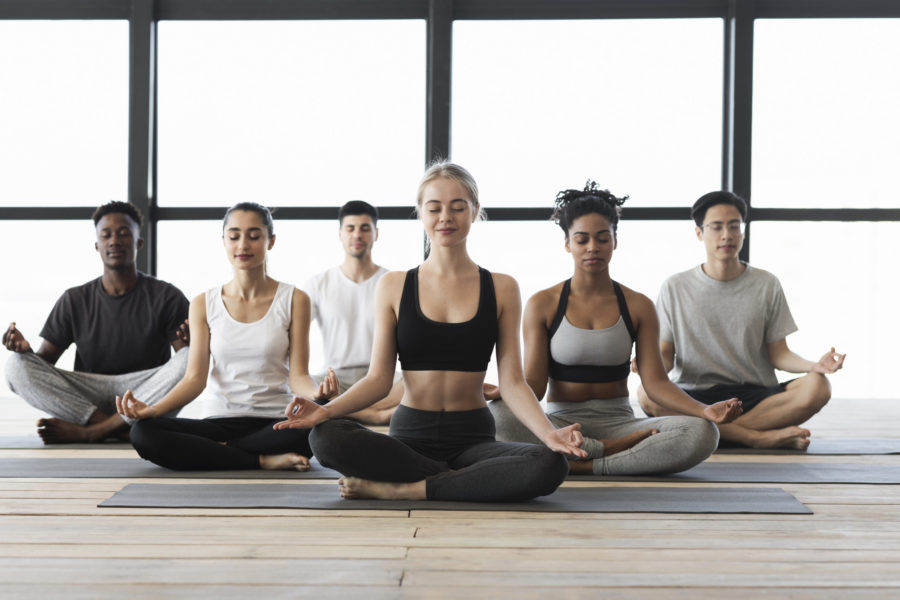Mindfulness has become a buzz word in the last several years but what does it actually mean and can anyone do it?
According to Mindful.org, mindfulness is “the basic human ability to be fully present, aware of where we are and what we’re doing, and not overly reactive or overwhelmed by what’s going on around us.” The American Psychological Association (APA) also adds that it is “a moment-to-moment awareness of one’s experience without judgment.” In other words, being mindful means taking notice of what is happening within and around you in a non-judgmental fashion.
Many people think of mindfulness solely as it relates to traditional meditation – cross-legged on the floor with closed eyes – but mindfulness can be practiced anywhere at any time.
Why should I start a mindfulness practice?
Is mindfulness for me? Are there benefits to this practice? Life is so busy – who has time to focus on one thing at a time? Aren’t we being praised for multitasking?
THE DOWNSIDE OF MULTITASKING
Psychology Today debunks the myths on productivity and multitasking. There are many disadvantages to completing several activities simultaneously, particularly as it relates to using our phones while we are also trying to accomplish other tasks – sound familiar? It can cause harm to our brains (particularly in the areas of cognitive control, motivation and emotion), lead to problems in relationships (who likes being ignored while your partner is on their phone?), increased distractibility, memory problems and make you more likely to walk into traffic or fall and break bones. How useful is multitasking if it ultimately clouds our minds?
BENEFITS TO MINDFULNESS
On the flip side, Verywell Mind, a partner of Cleveland Clinic that prioritizes mental health, says there are some major benefits to a regular mindfulness practice. Whereas multitasking can negatively affect our memory, mindfulness actually boosts our power to remember. Mindfulness can improve relationships with others, perhaps because we are noticing their flaws non-judgmentally and have more patience with them. Other benefits included sustained attention span, cognitive flexibility, increased emotional regulation and better physical health, particularly in regards to fibromyalgia, Type 2 diabetes, rheumatoid arthritis and psoriasis. As if those benefits weren’t enough to start getting mindful immediately, what about decreased symptoms of depression as well as reduced stress and anxiety? According to the Global Organization for Stress, 75% of American adults experienced moderate to high stress levels within the past month and the APA’s Stress in America 2020 study declares that we are currently in a national mental health crisis. Sounds like most of us could benefit from some stress relief!
How Can I Practice Mindfulness?
Mindfulness can be practiced anytime, anywhere. There are many parts of our daily routines that we do on autopilot. But what would happen if you completed these tasks with intention?
IN THE CAR
Many of us spend a lot of time in our cars, traveling to and from work or errands or afterschool activities. We allow ourselves to get frustrated with other drivers, traffic or finding the perfect song on the radio. Next time you get behind the wheel, put your phone down and take notice of everything around you. Are cars speeding? What is the weather like? Do you notice any smells? How is the temperature in your vehicle? Are they building a new store at the next stop light?
AT WORK
Running from meeting to meeting, phone ringing off the hook, incessant chain of emails, interruptions from coworkers. Sometimes it can feel overwhelming and exhausting. The to-do list can be long and it is easy to run through it mindlessly so you can feel accomplished. But what if you tackled each individual task with full attention and purpose? Try reading a single email at a time and focusing your full attention on what it says. Take a deep breath and notice how it feels going in and out of your body. How does the keyboard feel under your fingers? Are the keys sticky or do they type easily? What is the ambiance in the room? Is there music playing? Is there an aroma? How is the lighting – bright fluorescent lights or dim lamps? What does your chair feel like? How is your posture?
WHILE EATING
One of the most common ways to ease into a mindfulness practice is to try mindful eating. Take a bite and chew slowly, paying particular attention to the taste, texture and temperature of the food you’re eating. Savor every bite and notice the sensations of how it feels while you chew and swallow. Slowing down and savoring food can help you identify sooner when you are satiated. Healthline reports that mindful eating can also help you lose weight by reducing stress and changing eating habits.
IN THE SHOWER
Maybe you want to try mindfulness in the shower. How does your shampoo smell? What is the feeling and texture of your soap? What is the water temperature? How does your body feel underneath the running water? Is your towel plush or rough? Does it smell like laundry detergent?
Being fully present in the moment allows us to use our senses to detect and notice details that we would otherwise dismiss. It quiets the “monkey mind” that has multiple competing thoughts by focusing specifically on one task. Mindfulness allows us to get the full experience out of every experience.
Mindfulness is an ability that every person possesses. Culturally speaking, we have been trained to be on the go and rush through activities. This is why mindfulness is a “practice” – it’s something we must regularly apply to become more effective. This skill does not come easily for everyone. Take time to intentionally focus on your current internal and external status and quietly observe, without judgment, what is happening around you. This regular practice can help you relax in the moment and for days to come. What do you have to lose?
RELATED ARTICLES
Best Books for Well-Rounded Self-Care
Doggy Beach Day – What You Should Know

